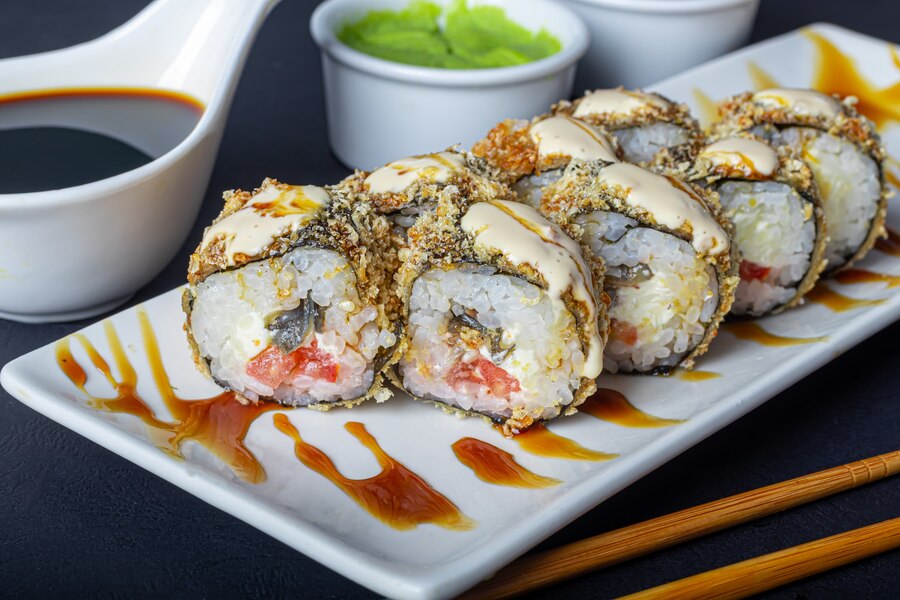When it comes to sushi, the Alaska Roll stands out for its unique combination of flavors and textures. This delightful sushi roll features fresh salmon, avocado, and cucumber, making it a favorite among sushi enthusiasts. In this article, we will explore the origins of the Alaska Roll, its key ingredients, the preparation process, and tips for enjoying this delicious dish.
The Origins of the Alaska Roll
A Fusion of Cultures
Sushi, originally from Japan, has evolved significantly as it spread across the globe. The Alaska Roll is a prime example of this evolution, blending traditional Japanese sushi techniques with ingredients commonly found in American cuisine. While the exact origins of the Alaska Roll are unclear, it is believed to have been created in the United States, where sushi chefs began experimenting with local ingredients to appeal to Western tastes.
Popularity in the U.S.
The Alaska Roll has become a staple in many sushi restaurants across the United States. Its combination of fresh, high-quality ingredients and mild flavors makes it accessible and enjoyable for both sushi novices and seasoned aficionados.
Key Ingredients of the Alaska Roll
Salmon
The star of the Alaska Roll is fresh, high-quality salmon. Known for its rich flavor and buttery texture, salmon adds a delicious depth to the roll. Opt for sushi-grade salmon to ensure the best taste and safety.
Avocado
Avocado provides a creamy contrast to the salmon’s richness. Its mild flavor and smooth texture complement the other ingredients perfectly, making it a key component of the Alaska Roll.
Cucumber
Cucumber adds a refreshing crunch to the roll. Its crisp texture balances the softness of the avocado and salmon, providing a pleasant variety of textures in each bite.
Nori
Nori, or seaweed, is used to wrap the roll. It adds a subtle, briny flavor that enhances the overall taste of the sushi.
Sushi Rice
Properly prepared sushi rice is essential for any sushi roll. Seasoned with rice vinegar, sugar, and salt, the rice should be sticky enough to hold the roll together but not too mushy.
Preparation Steps for the Alaska Roll
Step-by-Step Instructions
- Prepare the Sushi Rice: Rinse 1 cup of sushi rice under cold water until the water runs clear. Cook the rice according to the package instructions, then transfer it to a large bowl. While the rice is still warm, gently fold in a mixture of 2 tablespoons of rice vinegar, 1 tablespoon of sugar, and 1 teaspoon of salt. Allow the rice to cool to room temperature.
- Prepare the Fillings: Slice the salmon into thin strips. Cut the avocado in half, remove the pit, and slice it into thin strips. Peel the cucumber and cut it into matchstick-sized pieces.
- Assemble the Roll: Place a bamboo sushi mat on a clean surface and cover it with a sheet of plastic wrap. Place a sheet of nori, shiny side down, on the mat. Wet your hands with water to prevent the rice from sticking, then spread a thin, even layer of sushi rice over the nori, leaving a 1-inch border at the top edge.
- Add the Fillings: Arrange a few strips of salmon, avocado, and cucumber along the bottom edge of the nori.
- Roll the Sushi: Using the bamboo mat, carefully lift the bottom edge of the nori and roll it tightly over the fillings, pressing gently but firmly to ensure the roll holds together. Continue rolling until you reach the top edge, then gently press the seam to seal the roll.
- Slice and Serve: Use a sharp knife to slice the roll into bite-sized pieces, wiping the knife with a damp cloth between cuts to keep it clean and sharp. Arrange the slices on a serving plate and garnish with pickled ginger, wasabi, and soy sauce.
Serving Suggestions for the Alaska Roll
Traditional Accompaniments
To enjoy the Alaska Roll to the fullest, consider serving it with traditional sushi accompaniments:
- Soy Sauce: For dipping, enhancing the savory flavors of the roll.
- Wasabi: A small dab of wasabi adds a spicy kick that pairs well with the mild flavors of the Alaska Roll.
- Pickled Ginger: Also known as gari, pickled ginger is used to cleanse the palate between bites.
Modern Twists
For a modern twist on the Alaska Roll, try these creative serving ideas:
- Drizzle with Spicy Mayo: A mixture of mayonnaise and sriracha sauce adds a creamy, spicy flavor.
- Top with Tobiko: Flying fish roe adds a pop of color and a crunchy texture.
- Sprinkle with Sesame Seeds: Lightly toasted sesame seeds add a nutty flavor and extra crunch.
Health Benefits of the Alaska Roll
Rich in Omega-3 Fatty Acids
Salmon is an excellent source of omega-3 fatty acids, which are known for their heart-healthy benefits. Regular consumption of omega-3s can help reduce inflammation, lower blood pressure, and improve overall heart health.
High in Vitamins and Minerals
The ingredients in the Alaska Roll are rich in essential vitamins and minerals. Salmon provides vitamin D and B12, avocado is packed with potassium and healthy fats, and cucumber offers a good amount of vitamins K and C.
Low in Calories
Compared to many other dishes, sushi rolls like the Alaska Roll are relatively low in calories, making them a healthy choice for those looking to enjoy a delicious meal without overindulging.
Conclusion
The Alaska Roll is a delightful fusion of fresh ingredients and traditional sushi techniques. Its combination of rich salmon, creamy avocado, and crisp cucumber makes it a popular choice for sushi lovers. Whether you’re a seasoned sushi enthusiast or new to the cuisine, the Alaska Roll offers a delicious and satisfying experience that’s sure to please your palate. Next time you’re at a sushi restaurant or making sushi at home, be sure to give the Alaska Roll a try—you won’t be disappointed.










